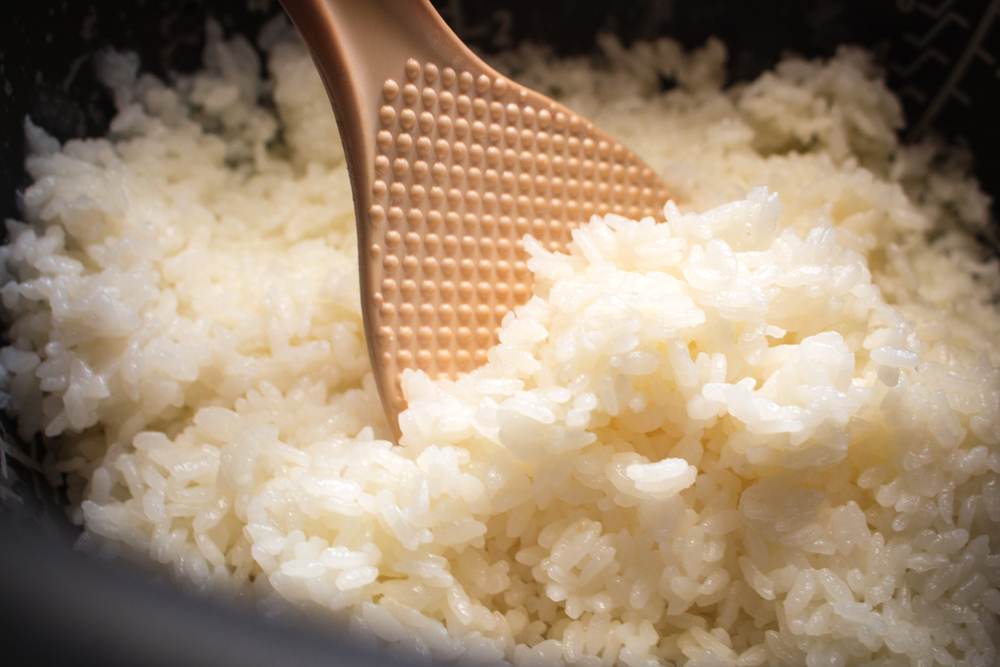If you’ve ever purchased a rice cooker, you may have noticed a surprise addition in the box. It’s a rice paddle, and it looks like a wide, flat spatula with a round head and small handle. It is typically made of plastic or wood. In Japan, they are called “shamoji,” and they are a kitchen staple. So don’t toss it into the utensil drawer with other rarely used spatulas. Keep it alongside the rice cooker, which will keep the appliance in good condition while significantly improving the rice’s texture.
The purpose of the rice paddle

Rice cookers are lined with a nonstick coating, which means they should only be used with certain types of utensils, namely plastic and wood. Tools made of metal and similarly hard materials can scratch and scrape the coating, making it peel off and become ineffective. So the cooker comes with its own rice paddle that’s safe to use with the main product.
Simply put, the rice paddle is meant to stir, scoop, and serve rice — all without mashing up the grains. When using a rice cooker, it’s good to stir the rice when the cooking cycle is over. This step helps release excess moisture and maintain a consistent texture throughout the dish. The paddle comes ready to do this while maintaining the fluffiness. It’s also helpful for mixing vinegar into the rice when making sushi.
Read More: 9 Sneaky Ways To Get Free Food When Eating Out
Should you get a rice cooker?

The paddle aside, rice cookers can be game-changer if you make rice frequently or aren’t confident with cooking rice on the stove. The cooking method is simple; the cooking bowl heats to a boiling temperature and then automatically turns lower or off when the rice is complete. The product comes with a guide on how much water to add based on the type and size of the rice, making the process even more foolproof.
“I love [a rice cooker] because it takes all the guesswork out of making perfect rice,” said Dale Talde, chef and owner of Goosefeather. “It’s a must-have appliance because even if you happen to put in too much water or not enough, it adjusts to help make perfect rice.”
Not only that. But rice cookers can also cook curries and stews. In face, some version have a setting specifically for these types of dishes. Some also come with settings for quick-cook and delay start so you can plan meals in advance or last minute.
Always rinse!

One of the most important rice-making tips is to rinse the uncooked grains until the residue comes off and the water runs clear. It reduces the amount of arsenic in the rice as well as removes particles of dust, dirt, and bran. “I’ve seen how they collect rice in the paddies and how it’s processed in the factories,” says Min Kim Bryant, a market analyst at CR. “The same reason I wash my produce is why I wash my rice.”
For thick grains such as wild rice, sushi rice, or brown rice, some experts recommend soaking them for about half an hour to help soften them.